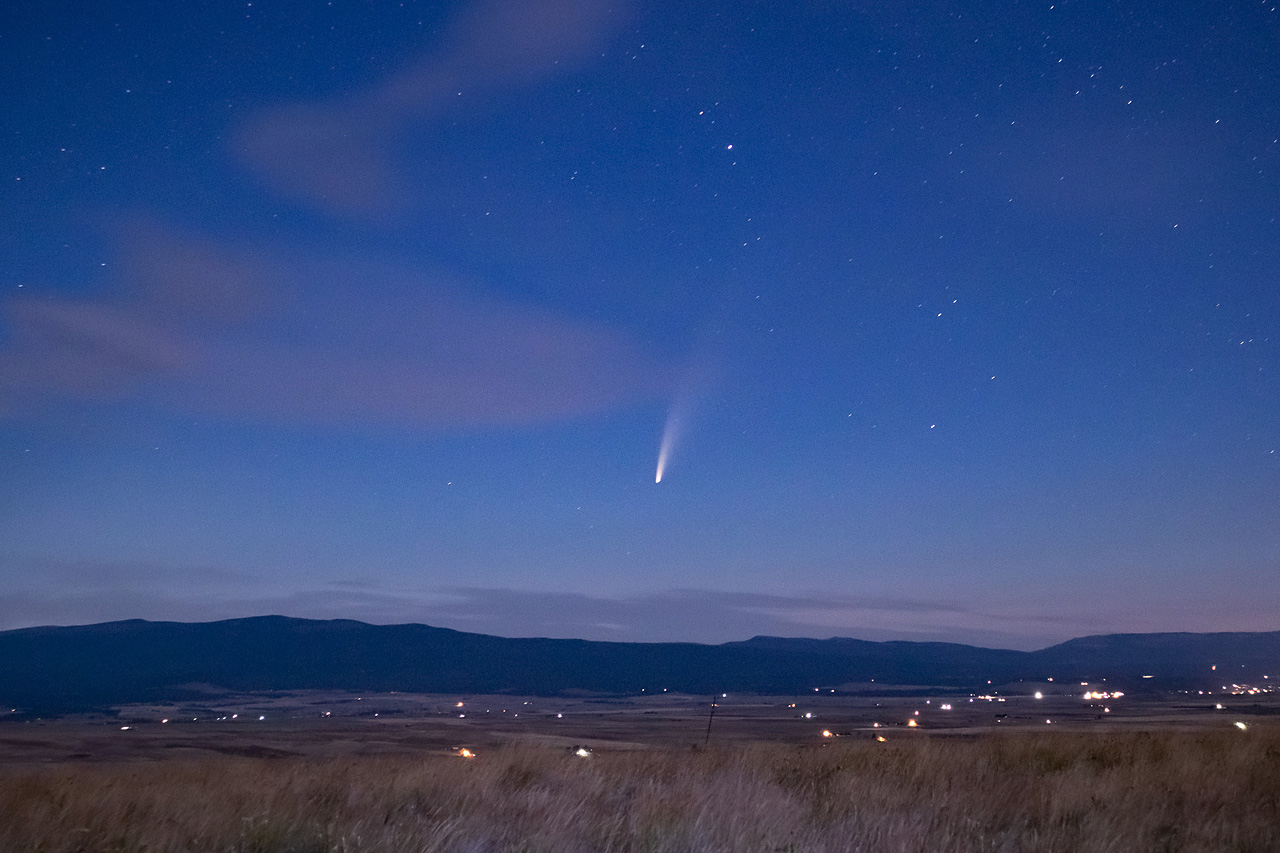Unless you’ve been living under a rock lately (and I admit that it sometimes feels like that these days), you’ve probably heard about and seen images of comet NEOWISE. I haven’t had a chance to get out to photograph it myself, but hope to next week. Several of my astrophotography friends have captured it, and one of the best so far is the above photo by Bruce Alber. This was captured less than a week ago from Dalles Mountain (in Oregon), in the early morning. He used a Canon DSLR and zoom lens (I’m not sure at what focal length), with no tracking. The stars are a bit elongated since there was no tracking over a 20 second exposure.
The name NEOWISE comes from the space telescope (Near-Earth Object Wide-Field Infrared Survey Explorer) that first spotted the comet on March 27th. The official name for the comet is C/2020 F3. When first seen, it was headed in toward the Sun, and through early June we couldn’t see it as it went around the Sun, but now it has re-emerged as one of the brightest comets we’ve seen in many years. Right now it is visible in the northeast sky in the morning and northwest sky in the evening. This is shifting toward night, so morning viewing will soon no longer be possible, while the evening view gets better, as it “stays up later” each night. Unfortunately, at the same time it is getting farther away from us, and thus dimmer (probably). Astronomers say that comets are like cats; they have tails and are unpredictable. It could become either dimmer or brighter. Or it could break up into numerous small pieces that would quickly fade away. So I want to get to a dark sky site as soon as the weather permits.
Actually, this comet is so bright (around first magnitude) that you don’t really need very dark skies to see or photograph it, as is shown in the above photograph. More important than darkness is having a good, low northern horizon, because it never gets very high above the horizon (around 30 degrees near sunset). Catch it while you can!
